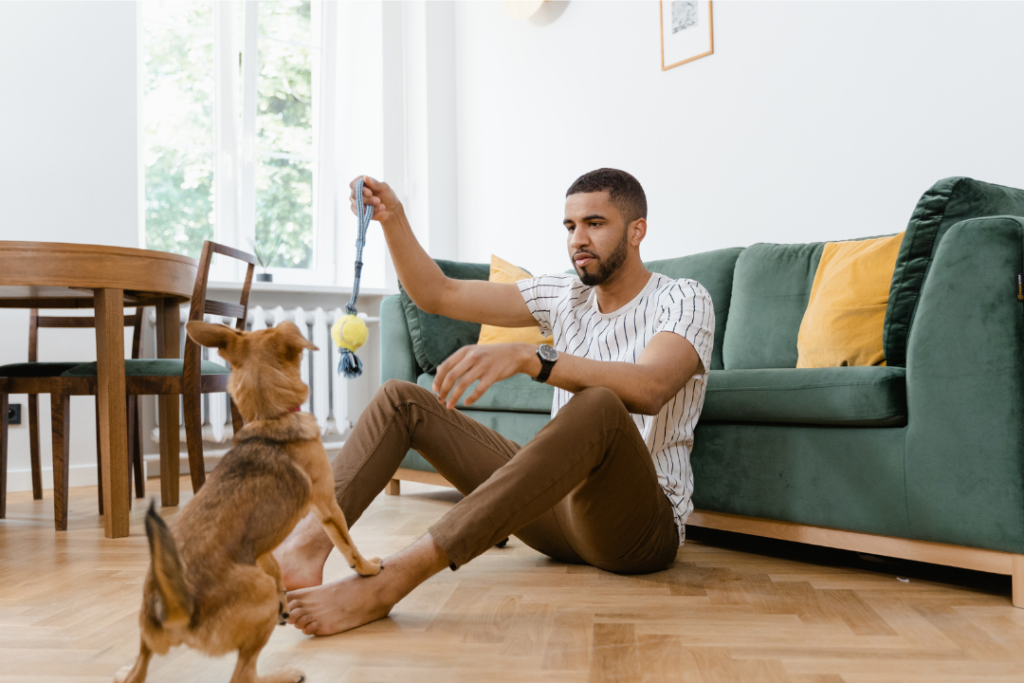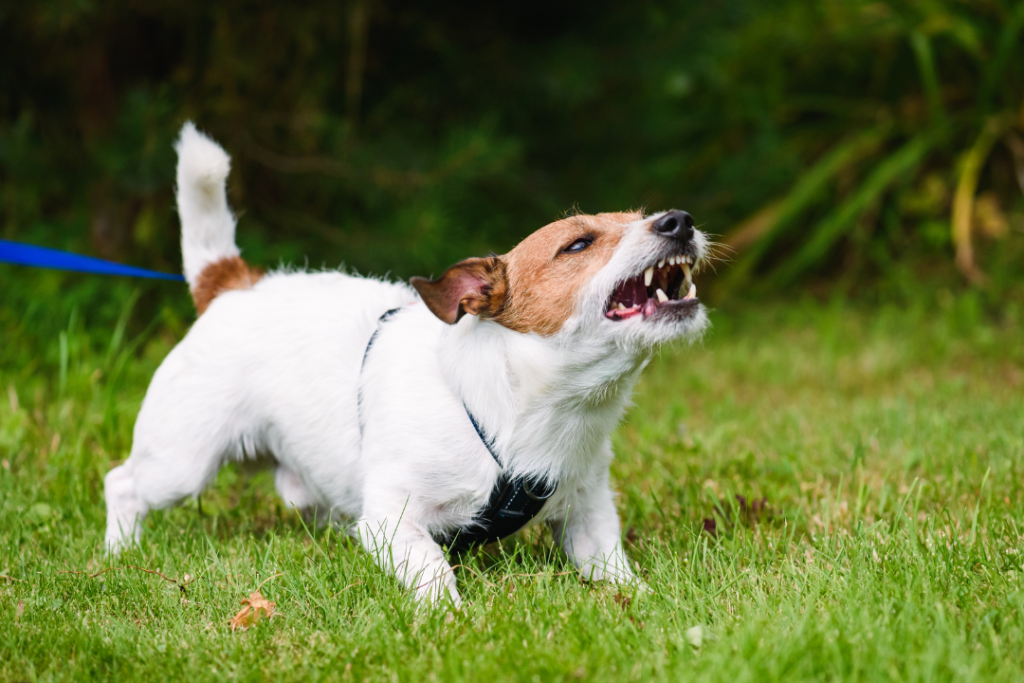Dog Growls at Husband but Not Me
Welcome to CRT K9, where we believe every bark, growl, and wag has a story. Today, we’re delving deep into a peculiar canine conundrum that baffles many pet owners: why does your furry friend growl at your husband but not at you? It’s a head-scratcher, but fear not! As your trusty dog training professionals and enthusiastic dog bloggers, we’re here to unravel this mystery with both the precision of a trained sniffer dog and the playfulness of a puppy chasing its tail.

Understanding Canine Communication
First things first: growling is not just noise. It’s a sophisticated form of communication, rich in emotional expression. Dogs growl for reasons as varied as the breeds we adore – from fear and protection to discomfort and a simple “back off” message. Recognizing growling as a part of your dog’s language is the first step towards understanding and addressing the behavior.
Reasons Why Dogs May Favor One Person Over Another
Dogs are not just our pets; they’re social creatures with emotions, preferences, and, yes, favorites. This favoritism can stem from several factors:
- Socialization and Attachment: Just like humans, dogs form deep bonds with their caregivers. These bonds are influenced by early socialization, the amount of time spent together, and the quality of interactions.
- Past Experiences: Dogs have memories. A dog might gravitate towards the person who feeds them most, plays with them, or provides comfort during thunderstorms.
- Scent Recognition and Behavior: Dogs have an extraordinary sense of smell. They can detect subtle changes in a person’s scent caused by emotions, which might explain their preference for one person over another.
- Energy and Body Language: Dogs are keen observers of human behavior. A calm, confident demeanor can attract a dog, while nervousness or inconsistency might lead to growling.
Behavioral Differences Towards Family Members
Your dog sees your family as its pack, and each member has a role and status within this pack. Confusion and stress can arise if the dog receives mixed signals from different family members. Consistency is key – in rules, boundaries, and behavior.
Why Dogs May Be More Afraid of Men Than Women
It’s not uncommon for dogs to show a marked preference or aversion to a specific gender. Many dog owners observe that their furry friends are more cautious or even afraid around men. This behavior can stem from a variety of reasons:
- Deep-Rooted Instincts: Historically, dogs may view men as more imposing due to their size, deeper voice, and more assertive demeanor. These characteristics can trigger a dog’s instinctual responses of fear or caution.
- Past Experiences: Dogs with traumatic pasts or those with limited early socialization might be more sensitive to men, especially if their negative experiences were with a male figure.
- Body Language and Approach: Men typically have a different approach and body language, which can be intimidating to a dog. Quick movements, direct eye contact, or a deep voice can all be factors that contribute to a dog’s fear.

Bridging the Gap: Overcoming Fear of Men
Understanding the root cause of your dog’s fear is the first step toward addressing it. Here are strategies to help your dog become more comfortable around men, including the ones they live with:
- Gradual Introduction: Start with slow, controlled introductions to men, ensuring these experiences are positive. Use treats and have the man avoid direct eye contact or reaching over the dog’s head initially, as these can be seen as threatening gestures.
- Positive Associations: Encourage men to feed the dog or engage in their favorite play activities. Positive experiences can help overwrite negative associations. The key is consistency and patience.
- Desensitization and Counterconditioning: This involves exposing your dog to men in a way that does not provoke fear, while simultaneously offering positive reinforcement. Over time, your dog learns to associate men with good things, like treats or playtime.
- Respect the Dog’s Pace: Never force interactions. Allow the dog to approach in their own time. Forcing a fearful dog to interact can reinforce fear.
- Professional Help: If the fear is deeply ingrained, consulting with a dog behaviorist can provide tailored strategies and support. Sometimes, professional intervention can make all the difference.
Building Trust and Confidence
The goal is not just to reduce fear but to build trust and confidence between your dog and all members of the household, including men. Remember, each dog is an individual, and what works for one may not work for another. Be observant, flexible, and responsive to your dog’s needs.
By incorporating understanding, patience, and consistent positive experiences, we can help our canine companions overcome their fears. It’s a journey, but one well worth taking for the sake of our beloved pets.
Strategies for Managing and Correcting Growling Behavior
Here’s where we put our dog training hats on – figuratively, of course, though an actual hat might be fun. Addressing growling behavior starts with understanding and then moves on to strategic correction:
- Positive Reinforcement: Rewarding your dog for positive behavior is more effective than punishment for negative behavior. Treats, praise, and love should follow good behavior, not growling.
- Family-Wide Consistency: Ensure everyone in the household is on the same page regarding commands, rules, and rewards. This clarity reduces confusion and stress for your dog.
- Patience and Professional Guidance: Sometimes, a professional’s insight is needed. Don’t hesitate to seek help from a certified dog behaviorist.
Creating a Positive Environment for Everyone
Building a positive relationship between your dog and the person they growl at involves patience, understanding, and consistency:
- Increase Positive Interactions: Engage in activities that your dog enjoys, like playing or walking, together with the person they’re less fond of. This builds positive associations.
- Involvement in Care and Training: When everyone takes part in caring for and training the dog, it strengthens the bond and builds mutual respect.
Conclusion
Understanding why your dog growls at one family member and not another requires patience, empathy, and a bit of detective work. Remember, growling is a form of communication, and with the right approach, you can turn growls into wags.
At CRT K9, we’re passionate about helping you understand and connect with your canine companions on a deeper level. Remember, every dog has its unique personality and reasons for its behavior. With love, understanding, and the right guidance, harmony is not just possible; it’s within reach.
Stay tuned for more insights, tips, and tales from the doggy world. Because when it comes to dogs, there’s always more to learn, love, and laugh about.
Happy training, and may your days be filled with wagging tails and doggy smiles!
